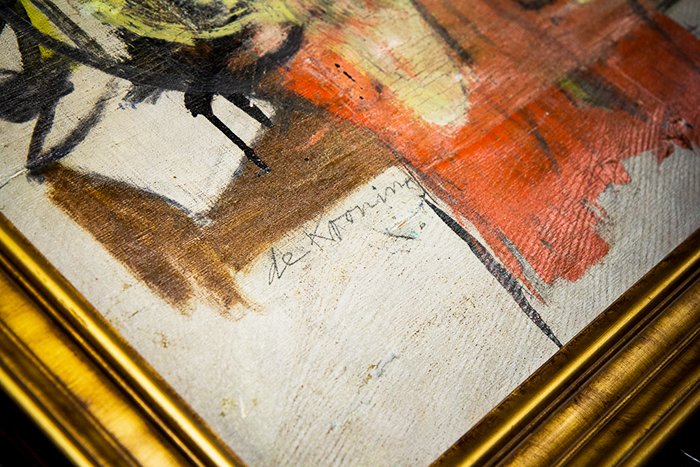Stolen de Kooning Found: Was It for Money or Did Thief Just Want a Look?

East Hampton became the center of the art world for about 30 years after World War II when huge numbers of artists resettled in town and produced Abstract Expressionist paintings here.
Jackson Pollock and Willem de Kooning were the most well known of them. Most lived hand-to-mouth, even swapping their paintings for groceries. None lived long enough to see their work sell today for tens, and even a hundred, million dollars.
Occasionally, though, paintings turn up here.
In 2002, filmmaker Alex Matter retrieved the possessions of his late father’s estate at the Home Sweet Home Moving and Storage in Wainscott. There, he found nearly three-dozen paintings tied together with twine that seemed to be original Jackson Pollocks. Herbert Matter was a friend of Jackson Pollock.
One art expert confirmed them to be Pollocks—which, if they were, would be worth tens of millions. Others, however, declared them to be the work of others, not Pollock. The issue is considered still up in the air.

Now comes a tale of a painting by Willem de Kooning. De Kooning painted “Woman-Ochre” in 1955. Also Abstract Expressionist, it portrays an angry, overbearing woman, hands on hips, looking out at the viewer. “Woman-Ochre” is valued around $100 million.
Eventually stolen from the University of Arizona Museum of Art in 1985, it was found in an antique and furniture store a few months ago. The owners of the store, who had bought the painting as part of an estate sale in New Mexico, took it to safety and, after learning of this, decided to give it back to the museum.
“For us it was the equivalent of finding a lost wallet and returning it. It was a no-brainer,” Buck Burns, one of the three owners of the store, told The New York Times.
* * *

Three years after de Kooning painted “Woman-Ochre,” a collector bought it and donated it to the University of Arizona Museum of Art in Tucson. It was put on display.
Almost 30 years later, on November 26, 1985, an older woman and a young man came to visit the museum moments after it opened at 9 a.m. They were met by a guard. The older woman distracted the guard by asking him questions while the young man went off. When he returned, the guard did not notice the man was hiding a rolled-up canvas under his coat. But after the pair left, the guard walked into the next gallery and saw that a de Kooning had been cut from its frame. The guard reported that the older woman had reddish blond hair and the young man a moustache.
Five years ago, a New York City schoolteacher named Jerry Alter, now retired to the village of Cliff, New Mexico, died at age 81. His wife, Rita, died last summer, also at 81. The antique and furniture store in Silver City bought the contents for about $2,000.
One day, a shopper saw this painting leaning against a wall and said it looked like a de Kooning. Co-owner David Van Auker took the picture to experts, found out who owned it and then returned it. The museum still had the frame with the canvas cut out. The cuts on this painting exactly matched the cuts in the original frame.

Schoolteachers Jerome and Rita Alter were a quiet, intellectual couple with a son who was believed to be mentally ill. In retirement, they traveled to countries in every continent in the world. Jerome wrote several books, according to The New York Times, and, in one short story, “The Eye of the Jaguar,” describes a heist where a grandmother and granddaughter steal a 120-carat emerald from a display.
“Having made their escape with no witnesses present, the thieves left absolutely no clues which the police could use to even begin a search for them,” Jerome wrote.
Police sketches made with the guard’s help show the older woman to be about 55, the young man about 35. Jerome would have been 54 and his son 23 at the time. One theory is that Jerome dressed as a woman wearing a red-blond wig. And the son swiped it. Some who’ve seen the sketches say it looks like them.

According to Van Auker, the painting was on the wall of the Alter’s bedroom. With the door open, you couldn’t see it. With it closed, you could see it from the bed.
Every night.









